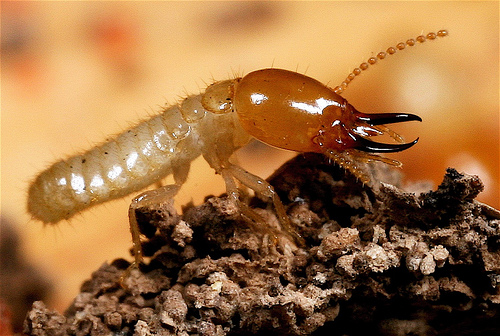One of the scariest phrases that you can hear from someone when you’re a homeowner is, “Your home is infested with termites.” Immediately images enter your mind of the structural integrity of your house being compromised from the inside by termites eating away at the wooden support beams that hold everything together.
The reality is, it is a serious issue when your house has termites, but the way to avoid this becoming your reality is to mitigate the potential risk in the first place by having regular termite treatment applied to your home. Like almost everything in life, prevention is better than cure, so talking to your pest control company is the first step in making sure thing nightmare never happens to you.
There are also some steps that you can take to help your situation as well, but it helps to understand how termites actually survive and thrive.

Termites don’t eat wood directly, what they are looking for is cellulose which is obviously abundant in wood. However, cellulose is also very abundant in paper, cardboard and even cloth materials. Sometimes homeowners inadvertently attract and foster termite colonies on the perimeter their actual home, which ultimately leads to the eventual compromising of the house itself.
Keeping that in mind, then one simple termite treatment strategy that you could employ is to keep paper, cardboard and loose plant material away from your property so that you don’t attract termites near your house in the first place.
Termites also need moisture to ensure that their nests don’t dry out. Termites thrive in moist, damp and dark recesses. When you combine moisture with their required food supply, you’re creating a serious potential problem for yourself. Keeping the perimeter of your house as dry as possible with good drainage is a great preventative termite treatment strategy.
The most common point of entry to a property for termites is through cracks in the foundation of your house. If you discover external cracks in the perimeter, then it’s imperative that you look for tunnel points into the foundation. If there are no visible signs, then you should fill the cracks immediately and contact a pest inspector to do an inspection and possible termite treatment.
Your pest inspector will undertake a thorough inspection of your property before determining what the best, most appropriate termite treatment for your situation could be. Generally speaking there are two forms of treatment deployed – baiting and liquid chemical termiticides.
Termite baiting gives termites access to toxic food that they return to their nest with and poison their colony. This is a very effective means of eradicating an entire colony over time. The baits can be deployed also as ongoing maintenance to ensure colonies do not recover.
Liquid termiticide treatments create a long lasting chemical barrier around your property that prevents termites from entering your foundations. The more modern termiticides also kill termites that reach the treated soil which provides and even greater level of protection.
Termite treatment is an ongoing effort for every home owner. You need to be diligent in keeping your property free of materials that attract termites and you should get in touch with the best pest control Brisbane to ensure that you have full maintenance strategy in place for your property.
